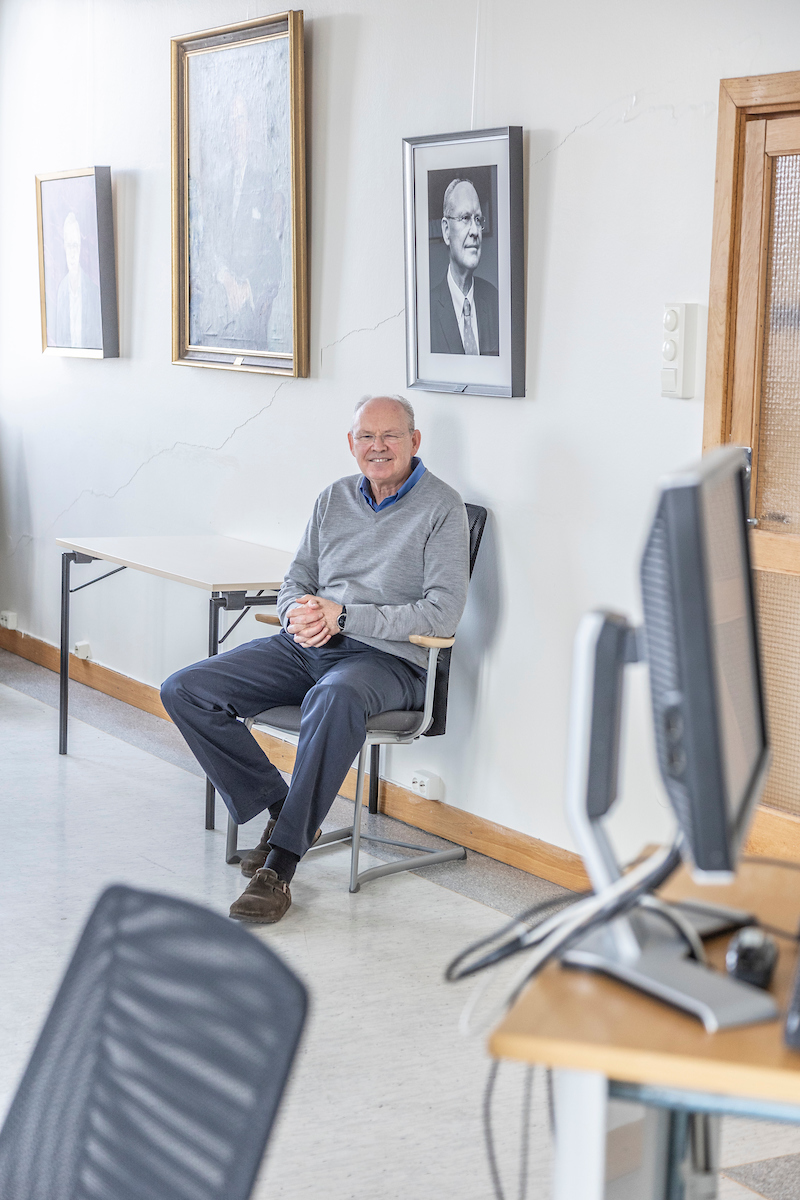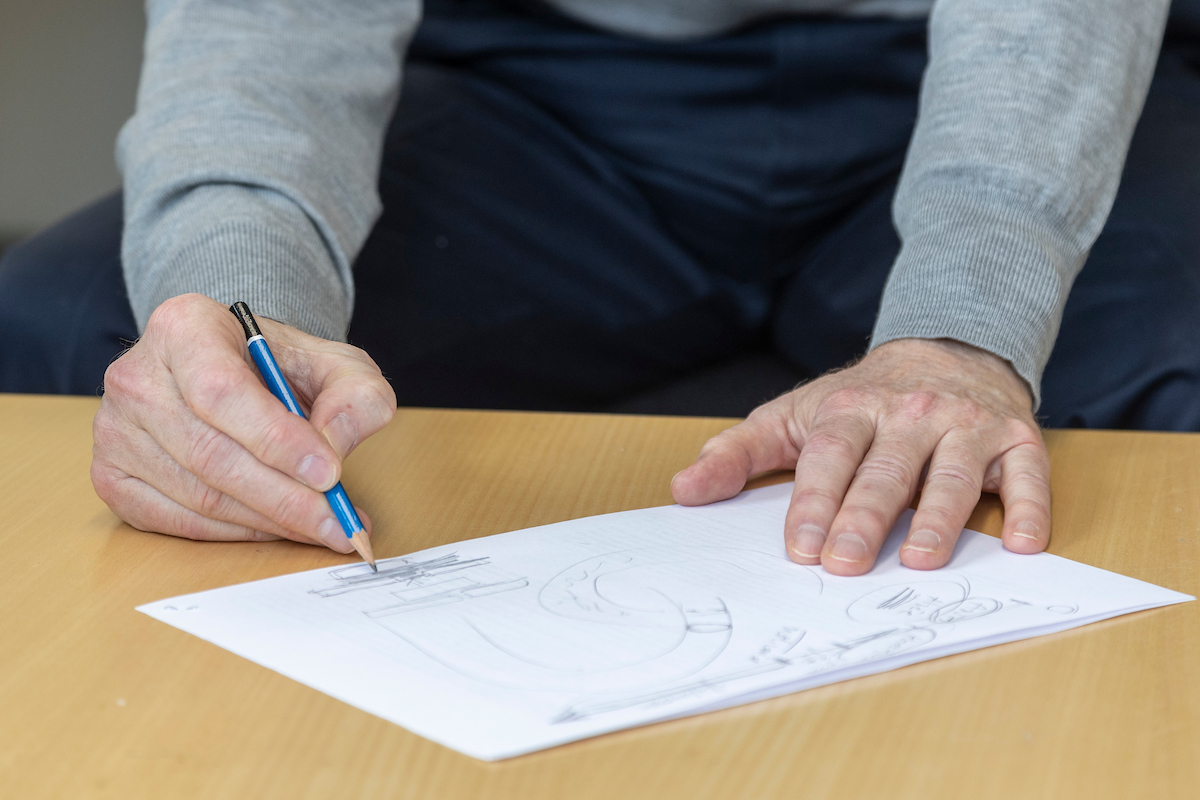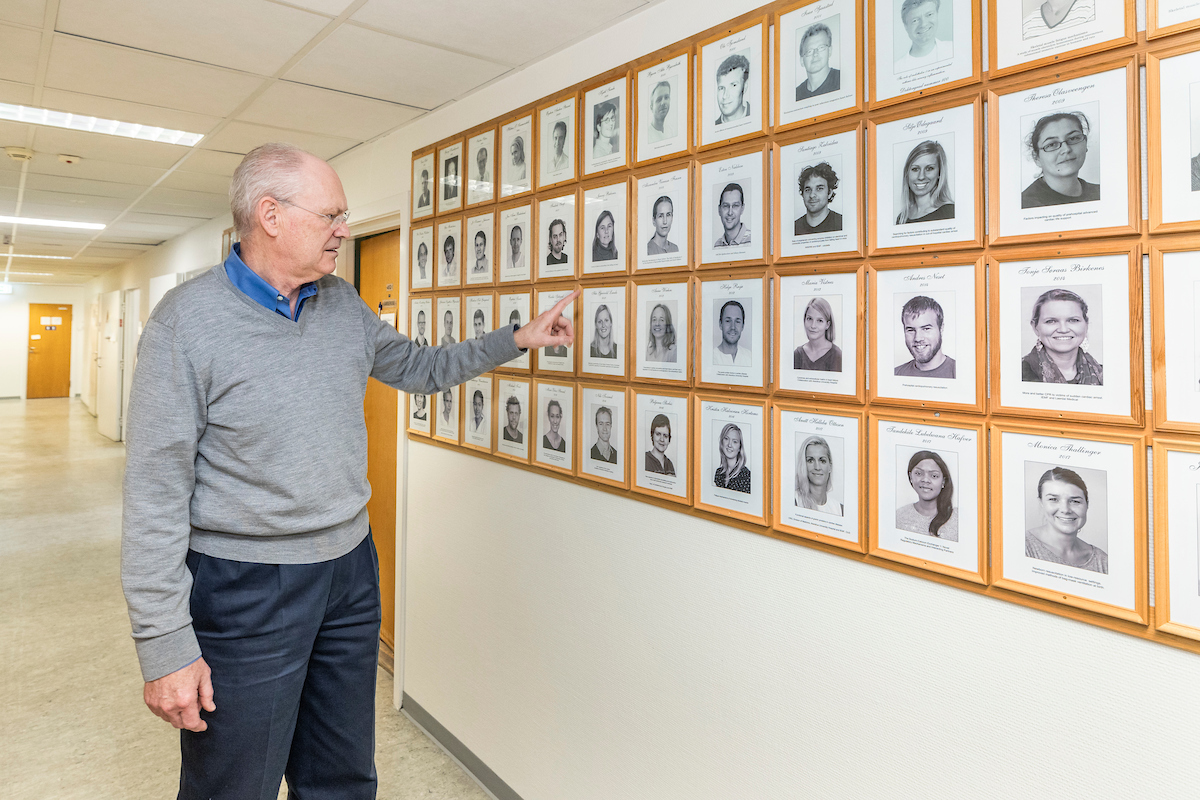A distinguished career
The paintings had to be shuffled around, as there was no doubt where Christensen’s photograph had to be hung: Above the chair by the wall, where he for years has offered his insight in departmental meetings. Humbly and passionately, as has been his way since he first came to IEMR as a PhD student in 1986.
“There are three things that characterise Geir Christensen: He is a mentor to students and a man who fosters academic cooperation, as well as being one of the most prominent heart researchers in Norway for several decades. For that he received the Heart Prize presented by King Harald V,” says Head of Department at IEMR, Mathis Stokke.
“Geir is driven by curiosity for the basic properties of nature. Through almost four decades and a substantial body of research, he has continued to uncover new aspects,” Stokke adds.
Hormones and molecules
Always the teacher; when asked to explain his research interests, Geir Christensen takes out a pen and starts sketching a timeline on the back of a discarded document.
“My interest in physiology, in particular circulation, began in medical school,” he begins. From there, it was only a hop and a skip to heart research.
Fascinated by the work of former IEMR director Fredrik Kiil on kidney function, he contacted the esteemed professor. Kiil introduced him to a tiny building block in the human circulation system that also became the foundation stone for his own career as a researcher: the atrial natriuretic peptide (ANP) hormone.
“Why don’t you study this cardiac hormone, and its effect on circulation, it could be important, he said to me. It turned out to be a bloody good idea. That’s how I got into heart research,” says Christensen, and offers one of his frequent smiles and quiet laughs.
The importance of basic research
“I studied how this hormone was secreted from and regulated by the heart,” explains Christensen. ANP regulates the body’s water balance and blood pressure. To put it simply, the more ANP released, the more you pee.
Today, that very hormone has become crucial to diagnostics as well as treatment of heart disease.
“We did with ANP what we do best at this institute: Basic research,” he says and leans forward. His body language tells us we are heading into another territory where his passion runs high:
“Translational research,” he calls it. Building the bridge between basic research and the understanding of the intricate workings of the human body, and clinical research where the tools for diagnostics and treatments are developed. The latter gets more headlines – and funding. The former is often left to constantly justify its reason for being.
“But you cannot have one without the other. Understanding how the body works through basic research is necessary in order to develop clinical diagnostics and treatment,” Christensen says, and uses the ANP hormone as an example. Christensen and other researchers studying ANP discovered that if the heart is overloaded, it releases ANP. Such basic understanding made it possible to start using ANP as a biomarker for heart disease.






